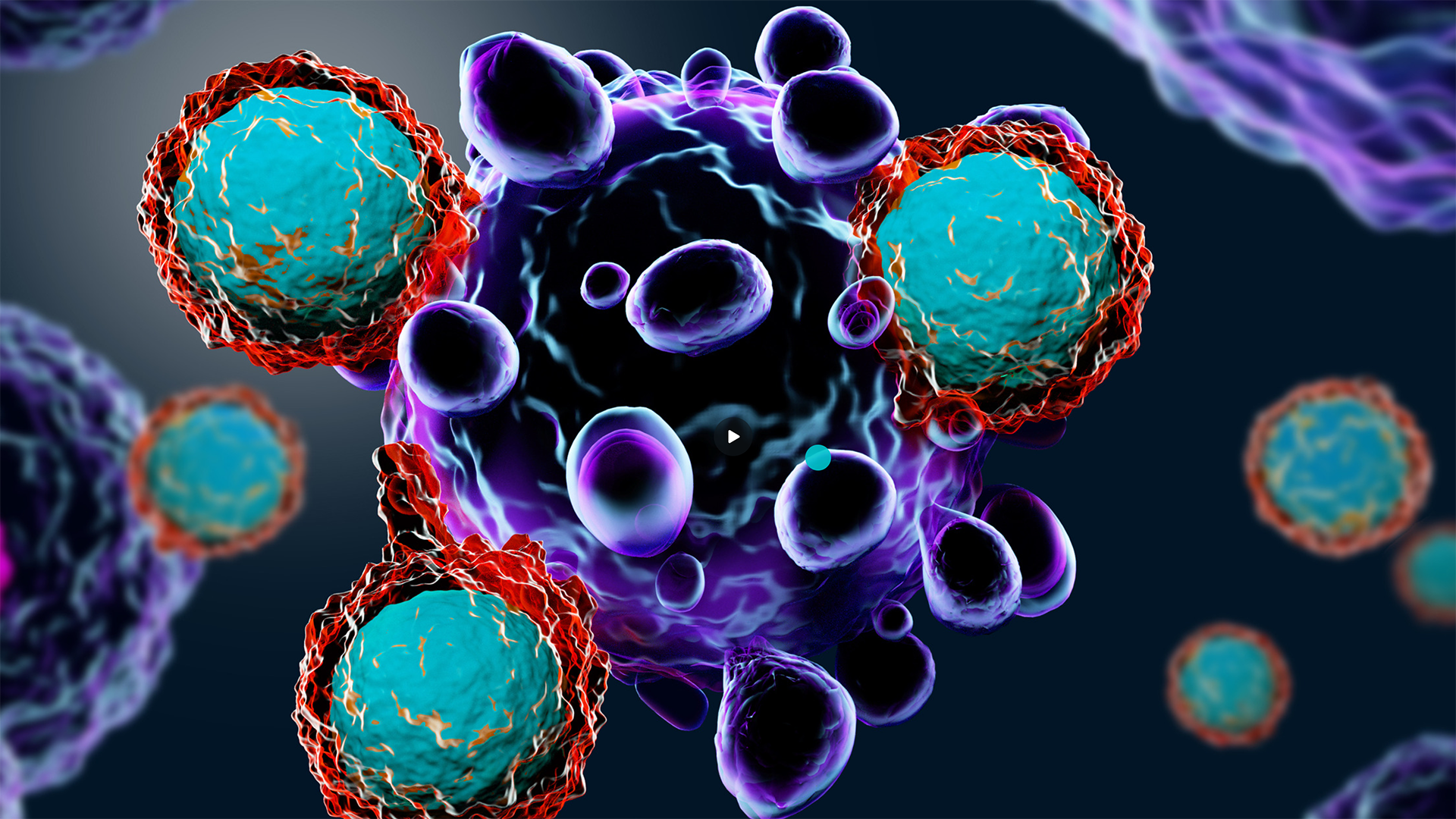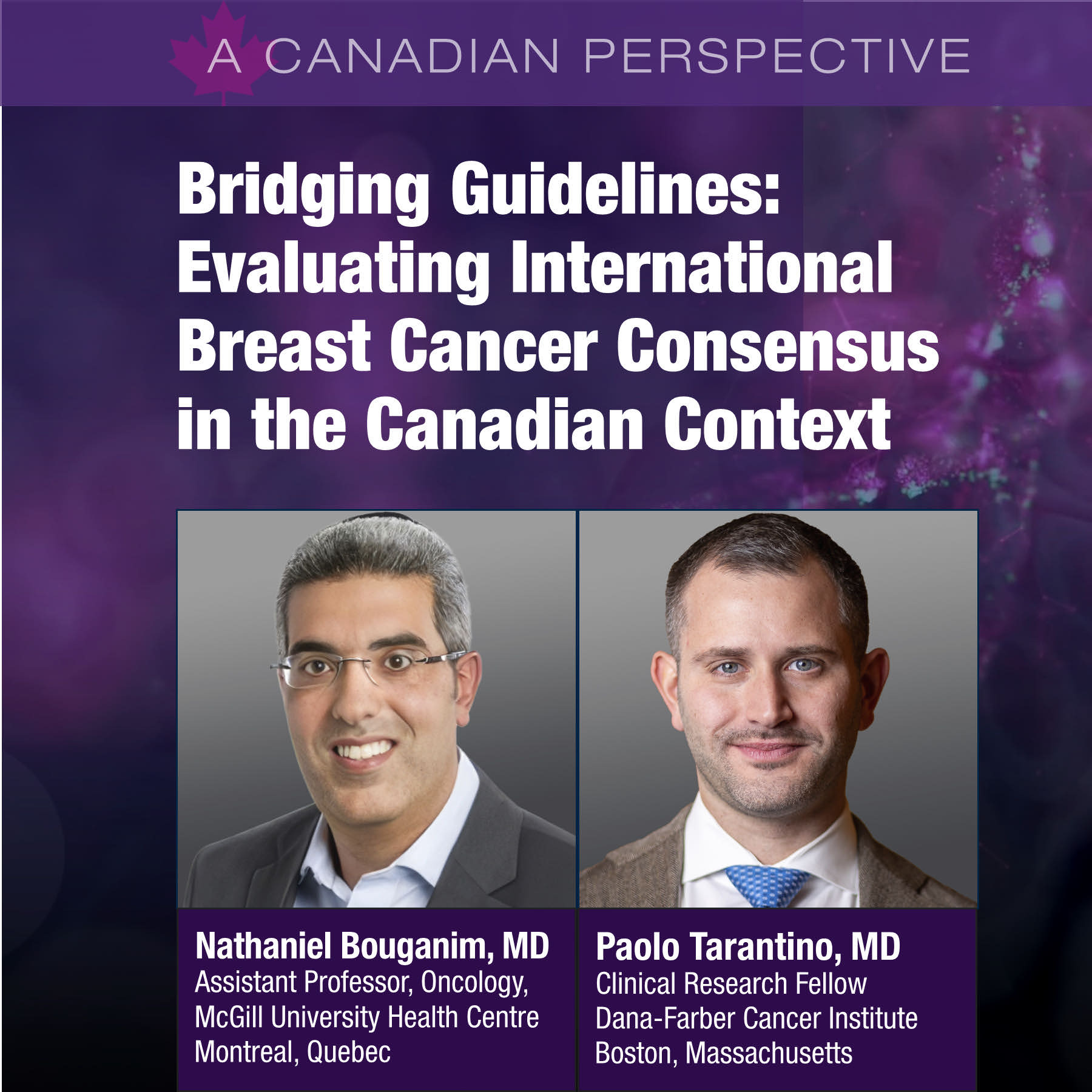
SABCS 2020 - Outcomes improving in TNBC with advances in therapy
December 2020
By Wayne Kuznar for oncoXchange
An update on advances in triple-negative breast cancer (TNBC) was provided by a series of experts during the virtual 2020 San Antonio Breast Cancer Symposium.
TNBC is a heterogeneous disease that remains a diagnosis of exclusion. TNBC is an “overarching term to describe a series of different pathways of disease that are amenable to potentially a precision medicine approach, and it’s not necessarily one particular gene driving it,” said Rebeca Dent, MD, head, Department of Medical Oncology, National Cancer Center Singapore.
The four TNBC subtypes are luminal-AR, mesenchymal, basal-like immune suppressed (worst prognosis), and basal-like immune activated. Regardless of the different TNBC signatures, pathway analysis overlaps. “All have identified a subset of TNBC with DNA repair deficiency and an immunotherapy group,” she said.
Outcomes are improving for TNBC, with a 5-year disease-free survival (DFS) >80% as a result of more preoperative treatment and tailoring of treatment.
In the metastatic setting, median overall survival is now >24 months with the aid of PD-L1 and BRCA as biomarkers and new antibody drug conjugates.
Patients with lymphocyte-predominant TNBC have better long-term DFS with treatment compared with patients who do not have lymphocyte-predominant disease, and increasing rates of pathologic complete response (pCR) with novel targeted agents.
Not all breast cancers are equally suitable for immunotherapy, said Dent. The mutation rate in TNBC is higher compared with other subtypes, “but the quality of these mutations as well as the quantity determine immune checkpoint sensitivity,” she said.
Modern adjuvant systemic regimens have benefited TNBC, with a reduction in early relapse rates, but the risk of relapse is still the highest of all the clinical subtypes, said Lisa A. Carey, MD, University of North Carolina Lineberger Comprehensive Cancer Center, Chapel Hill.
Neoadjuvant timing is now standard for all but the smallest node-negative tumors, not only for the opportunity for surgical de-escalation and an improvement in breast operability, but it also allows risk stratification for residual disease-directed therapy, she said.
Anthracycline/taxane regimens are the basis of systemic therapy, and dose-dense schedules have represented a major advance. The addition of carboplatin in higher risk patients (ie, node-positive), “is probably reasonable” to improve the conversion rate from node-positive to node-negative disease, likely resulting in fewer axillary dissections, and to enhance breast conservation rates, said Carey. “The addition of capecitabine in residual disease is now standard.”
Additional biomarkers of drug response, such as immune activation and pCR, and prognosis, such as number of tumor-infiltrating lymphocytes, may allow tailored efforts in the treatment of TNBC the future, including therapy de-escalation and avoidance of chemotherapy.
New therapies approved in the metastatic TNBC setting have improved outcomes, as reviewed by Jennifer Litton, MD, professor, Department of Breast Medical Oncology, University of Texas MD Anderson Cancer Center, Houston.
These therapies include the combination of atezolizumab and nab-paclitaxel for patients with PD-L1 positive, immune cell-positive metastatic TNBC, which was granted approval by the U.S. Food and Drug Administration (FDA) on the basis of an improvement in progression-free survival (PFS) and overall survival (OS) compared with placebo and nab-paclitaxel in this subpopulation in the IMpassion 130 study. Only patients with PD-L1-positive immune cells by the SP142 assay had a significant improvement in outcomes with the addition of atezolizumab, noted Litton.
In KEYNOTE-355, pembrolizumab added to chemotherapy improved PFS and OS in patients with PD-L1 combined positive score ≥1.
The antibody-drug conjugate sacituzumab govitecan demonstrated superior PFS compared with treatment of physician’s choice in patients with metastatic TNBC in the ASCENT study, which was halted early due to the compelling evidence of efficacy of sacituzumab. Two PARP inhibitors are FDA-approved for patients with metastatic TNBC, with improvements in PFS shown with olaparib in the OlympiAD trial and with talazoparib in the EMBRACA trial.
Neither trial, however, showed a signal toward better OS with PARP inhibition but did show an improvement in health-related quality of life.
In BROCADE, veliparib plus carboplatin/paclitaxel extended PFS over placebo plus carboplatin/paclitaxel, but after 11 to 12 cycles of chemotherapy, 40% of patients in the veliparib arm went on to veliparib monotherapy and 34% in the placebo arm continued with placebo monotherapy. The PFS curves, however, did not separate until the start of maintenance monotherapy, Litton said.
Because PARP inhibition activates the cGAS/STING pathway that increases the level of proinflammatory cytokines as well as increasing PD-L1 expression, a PARP inhibitor started before immunotherapy before combining the two treatments has the potential to further improve response.
AKT inhibitors combined with paclitaxel have shown a signal toward improved outcomes in patients with alterations in the PIK3CA/AKT1/PTEN pathway.
Other biomarkers beyond PD-L1 may be needed to define an optimal breast cancer immunogram, said Javier Cortes, MD, from the International Breast Cancer Center, Institute of Oncology, Madrid and Barcelona, Spain.
TILs tend to correlate with PD-L1 expression but PD-L1 and TILs provide independent predictive value to immune checkpoint benefit, he said, and tumor mutational burden provides complementary information to PD-L1 and TILs. High lactate dehydrogenase concentration and presence of liver metastases correlate with less activity of immunotherapy.
Immunotherapy-related toxicities and their time course are variable, said Cortes.
Enhanced T-cell activity is associated with increased inflammation throughout the body, with an array of effects that can differ according to the type of malignancy. The reason may be differences in the tumor microenvironment, gender-based heterogeneity, PD-1 and PD-L1 genetic polymorphisms, site of metastases, and neoantigen formation, among others.
Immune-mediated toxicities in KEYNOTE-355 included hypothyroidism, hyperthyroidism, pneumonitis, colitis, and severe skin reactions. Toxicities with anti-PD-1/PD-L1 treatments are less common and less severe compared with CTLA4 inhibitor. Most toxicities occur within the first 12 weeks of therapy but can occur at any time.
Delays in recognition of immune-related adverse events and intervention must be avoided. Reducing the dose of immunotherapy is not a recommended strategy. Corticosteroids and other immunosuppressants may be used to manage most immune-related adverse events, depending on their severity.

Comments (0)